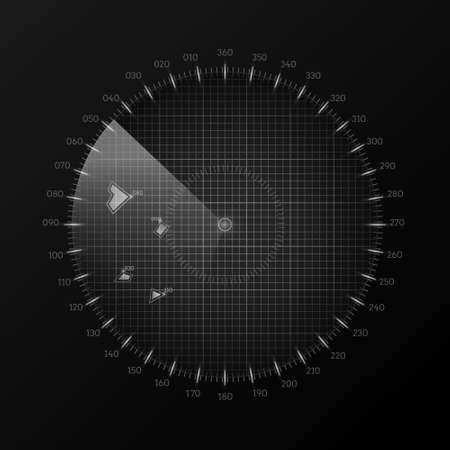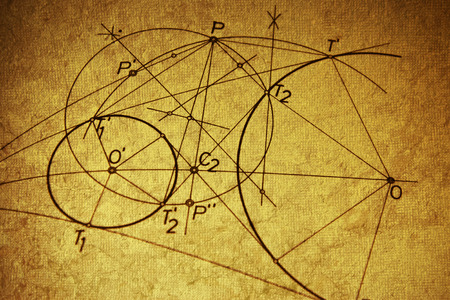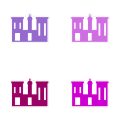Introduction to Janam Kundali Making in India
In the vibrant tapestry of Indian culture, the creation of a Janam Kundali, or birth chart, holds a place of immense importance. For centuries, families across India have cherished this astrological tradition, weaving it into the fabric of their lives and customs. From the moment a child is born, elders and astrologers come together to prepare the Janam Kundali, believing it to be a celestial blueprint that reflects not just one’s destiny but also deep insights about character, health, relationships, and prosperity. The Janam Kundali is much more than just an astrological document—it is a sacred guide that influences significant life decisions such as marriage (Vivah), education, and career choices. At its core lies the meticulous analysis of planets—known as Graha—whose positions at the time of birth are thought to shape every aspect of an individual’s journey. In Indian households, especially during pivotal moments like matchmaking or naming ceremonies (Naamkaran), planetary analysis becomes a trusted tool for understanding compatibility and timing. This ancient practice isn’t just about predicting fate; it is about fostering harmony within families and aligning actions with auspicious cosmic energies. Thus, planetary analysis in Janam Kundali making stands as a bridge between tradition and self-discovery, continuing to guide millions in their quest for fulfillment and growth.
2. Basics of Vedic Astrology and Planetary System
Vedic astrology, known as Jyotish Shastra in India, is deeply rooted in the ancient wisdom of the Vedas. At its heart lies the intricate interplay of Grahas (planets), Rashis (zodiac signs), and Bhavas (houses). Understanding these core concepts is essential for accurate Janam Kundali (birth chart) analysis.
Grahas: The Planets in Indian Astrology
Unlike Western astrology, Vedic astrology considers nine primary Grahas. Each Graha holds unique significance and influences different aspects of an individual’s life. Here’s a brief table summarising the nine Grahas commonly referred to in India:
| Graha | Common Name | Role in Janam Kundali |
|---|---|---|
| Surya | Sun | Represents soul, authority, father |
| Chandra | Moon | Mind, emotions, mother |
| Mangal | Mars | Courage, energy, siblings |
| Buddh | Mercury | Intellect, communication, business skills |
| Guru (Brihaspati) | Jupiter | Wisdom, teacher, expansion |
| Shukra | Venus | Love, art, relationships |
| Shani | Saturn | Karma, discipline, hardships |
| Rahu | North Node of Moon | Maya (illusion), ambition, foreign elements |
| Ketu | South Node of Moon | Moksha (liberation), detachment, spirituality |
Rashis: The Zodiac Signs (Raashi Chakra)
The twelve Rashis or zodiac signs are fundamental to Kundali making. They act as the backdrop against which planets operate. In Indian homes and temples, names like Mesh Rashi (Aries), Vrishabh Rashi (Taurus), Mithun Rashi (Gemini), and so on are commonly heard during astrological discussions.
| No. | Sanskrit Name (Rashi) | Zodiac Sign (English) |
|---|---|---|
| 1 | Mesh | Aries |
| 2 | Vrishabh | Taurus |
| 3 | Mithun | Gemini |
| 4 | Karkat/Karka | Cancer |
| 5 | Simha/Singh | Leo |
| 6 | Kanya | Virgo |
| 7 | Tula/Tulaa | Libra |
| 8 | >Scorpio | |
| 9 | Dhanu | Sagittarius |
| 10 | Makar | Capricorn |
| 11 | Kumbh | Aquarius |
| 12 | Meen | Pisces |
Bhavas: The Houses in a Kundali Chart
The twelve Bhavas or houses in a Janam Kundali represent various domains of life such as self, wealth, family, career, marriage and spirituality. Their position and planetary occupation at the time of birth play a pivotal role in shaping destiny. For example, Lagna Bhava (Ascendant) marks the beginning point and sets the tone for personality traits and life path.
Summary Table: Key Elements at a Glance
| Element | Indian Term | Significance in Kundali Analysis |
|---|---|---|
| Planets | Graha | Indicate energies and influences affecting life events |
| Zodiac Signs | Rashi | Backdrop for planetary placement; define qualities and traits |
| Houses | Bhava | Areas of life impacted by planetary energies |
In summary, mastering the basics of Grahas, Rashis and Bhavas lays a strong foundation for effective use of the planet analysis method in Janam Kundali making. These timeless principles continue to guide millions across Bharat when seeking clarity about their lifes journey.

3. Planet Analysis Method: Understanding Graha Phalam
In the intricate tradition of Janam Kundali making, analyzing the planets—known as Grahas—is a foundational step to reveal the unique blueprint of an individual’s life. The method of Graha Phalam (planetary results) is deeply rooted in Vedic astrology and offers an insightful understanding of how each planet shapes our destiny. Here is a step-by-step guide for analysing the planets in your Kundali, focusing on Graha Bala (planetary strength), planetary aspects (Drishti), conjunctions (Yuti), and their profound impact on your life journey.
Step 1: Assessing Graha Bala (Planetary Strength)
The first step in planet analysis is to evaluate the strength or Bala of each planet. In Vedic astrology, a planet’s strength determines how powerfully it can influence one’s chart. Factors such as Shadbala calculations, positional strength, and placement in exalted or debilitated signs are considered. For example, a strong Guru (Jupiter) in its own Rashi like Sagittarius brings wisdom, prosperity, and good fortune, whereas a weak Shani (Saturn) may cause delays and hardships.
Step 2: Analyzing Aspects (Drishti)
Every planet casts its gaze or Drishti on certain houses and other planets. Understanding these aspects is crucial in Indian astrology. For instance, Shani’s special Drishti on the third, seventh, and tenth house from its position carries significant karmic lessons and responsibilities. Rahu and Ketu have unique aspects that must also be studied carefully as they bring sudden changes or spiritual growth depending on their placement.
Step 3: Studying Conjunctions (Yuti)
When two or more planets occupy the same house, their combined energies can either amplify blessings or create challenges. This phenomenon—called Yuti—can alter the results promised by individual planets. For example, Budh (Mercury) conjunct with Surya (Sun) forms the auspicious Budh-Aditya Yoga which promotes intelligence and communication skills. However, if Shukra (Venus) is afflicted by malefics like Mangal (Mars), it may lead to relationship struggles or creative blocks.
Step 4: Interpreting Graha Phalam for Life Journey
Once you have assessed the strength, aspects, and conjunctions of all nine Grahas, the next step is to interpret how these planetary influences will manifest throughout different phases of life. In Indian culture, this process is often guided by experienced Jyotishis who consider Dasha periods (planetary time cycles) to predict major events such as marriage (Vivah Yog), career progress (Karma Sthana), health issues (Roga Bhava), and spiritual transformation (Moksha Karaka). Each Graha carries its own karma and purpose—from Chandra’s emotional nurturing to Mangal’s drive for action—and understanding their interplay helps one align with their dharma.
Cultural Insight: Embracing Your Unique Path
In Bharat, consulting the Janam Kundali before important milestones is a cherished tradition that strengthens faith in cosmic timing. Whether it is matching horoscopes for a shaadi proposal or selecting an auspicious date for Griha Pravesh puja, planetary analysis empowers individuals to take decisions rooted in both ancient wisdom and practical insight. Ultimately, understanding your Graha Phalam not only unveils your strengths and challenges but also inspires personal growth and resilience as you walk your own path under the watchful gaze of the Navagrahas.
4. Role of Nakshatras and Dasha System
In the intricate world of Janam Kundali, the Nakshatras (constellations) and the Dasha system hold pivotal roles that deeply resonate with the Indian psyche. Nakshatras, also known as lunar mansions, are twenty-seven unique segments in the sky, each associated with specific characteristics and energies. Every individual’s birth star (Janma Nakshatra) is determined by the position of the Moon at the time of birth. This placement is believed to influence not only personality traits but also life’s key events—a perspective widely accepted in Indian households.
The Dasha system, on the other hand, is a sophisticated planetary period analysis method used in Vedic astrology. It divides an individual’s life into distinct periods ruled by different planets (Grahas), signifying which planetary influences will be dominant at various stages of life. The most popular is the Vimshottari Dasha, spanning 120 years and assigning specific years to each planet as shown below:
| Planet (Graha) | Dasha Duration (Years) |
|---|---|
| Ketu | 7 |
| Venus (Shukra) | 20 |
| Sun (Surya) | 6 |
| Moon (Chandra) | 10 |
| Mars (Mangal) | 7 |
| Rahu | 18 |
| Jupiter (Guru) | 16 |
| Saturn (Shani) | 19 |
| Mercury (Budh) | 17 |
This structured approach gives individuals a clear roadmap for understanding periods of prosperity or challenges, which fits seamlessly with the Indian mindset that values guidance, family planning, and spiritual preparedness. Parents often consult astrologers to time significant decisions like marriage or career changes based on favorable Dashas and supportive Nakshatras. The belief that cosmic timing can shape destiny provides comfort and a sense of order amidst uncertainty.
Nakshatras also play an essential role in matchmaking (Kundali Milan), Muhurat selection, and naming ceremonies—rituals embedded in Indian culture. Each Nakshatra has ruling deities, elements, and auspicious activities associated with it, reflecting how astrology merges with daily life decisions in India.
5. Interpreting Janam Kundali: Practical Tips for Astrological Analysis
Reading and interpreting a Janam Kundali is both an ancient science and a sacred art in Indian tradition. Here are practical, actionable tips rooted in Vedic wisdom to help you analyse your horoscope for making pivotal life decisions such as marriage, career, and health.
Study the Lagna (Ascendant) and Its Lord
The Lagna represents the self, personality, and physical health. Observe its sign, position, and strength of the Lagnesh (Ascendant lord). For instance, a strong Lagnesh in Kendra (central houses) signals good fortune and resilience. Use this as your first checkpoint before delving deeper into planetary combinations.
Planetary Placement and Strength
Check each Graha’s (planet’s) position—are they exalted, debilitated, or combust? In Indian homes, elders often suggest chanting mantras or wearing gemstones if malefic planets are found in key houses. Remember, a benefic planet in the 10th house can enhance your career prospects, while a malefic Rahu or Ketu in the 7th may indicate marital delays or challenges.
Dasha (Planetary Periods) Analysis
The Dasha system is unique to Vedic Astrology. Examine which Mahadasha and Antardasha are running at present; these periods shape life events. For example, a Shani (Saturn) Mahadasha might demand patience and hard work but can also bring stability if navigated with discipline.
Traditional Remedies for Balance
Indian families often observe traditional upayas (remedies) like offering water to Surya Devta (Sun God), observing fasts on auspicious days, or visiting temples dedicated to one’s Ishta Devata. These practices are not mere rituals—they foster hope and resilience during tough planetary periods.
Kundali Matching for Marriage
Before marriage, matching of Kundalis—especially checking Ashtakoot Milan—is considered essential in Indian culture. Points like Nadi Dosha or Mangal Dosha are given special attention, and elders consult experienced pandits to suggest remedies when needed. This helps ensure harmony between couples beyond just compatibility scores.
Career Guidance from Houses
The 10th house signifies profession; a strong association with Mercury or Jupiter often hints at success in teaching or commerce fields. If facing obstacles, reciting Hanuman Chalisa on Tuesdays is a common advice across India to gain courage and focus.
Health Insights Through Planets
The 6th house reveals health challenges. A weak Moon here may cause emotional stress; Ayurveda recommends moonstone or cow’s milk as natural pacifiers in such cases. Always combine astrological insights with practical lifestyle changes for holistic well-being.
By blending these time-honoured methods with careful analysis, you honour your cultural heritage while making informed decisions about your future. May your Janam Kundali be a guiding light on your journey through life’s important crossroads!
6. Common Misconceptions and Local Beliefs
In India, Janam Kundali making and planet analysis are deeply rooted in tradition, yet they are often surrounded by myths and misconceptions. Many people believe that a Kundali can instantly predict ones entire fate or guarantee success, which is not the true essence of Vedic astrology. In reality, Kundali analysis is a guiding tool for self-awareness and preparation, not a magic formula for life events. Lets discuss some frequently observed myths and clarify the facts.
Myth 1: Kundali Is Fixed and Cannot Be Changed
A widespread belief is that your Janam Kundali determines your unchangeable destiny. However, Vedic wisdom teaches that while planetary positions at birth suggest tendencies, personal effort (Purushartha) and remedies (Upayas) can alter outcomes. The planets show possibilities, not certainties.
Myth 2: One Dosha Means Lifelong Problems
Many fear finding a Dosha like Manglik or Kaal Sarp Dosh in their chart. In reality, experienced astrologers consider the overall planetary strength and possible remedies rather than focusing solely on one aspect. Not all doshas bring lifelong issues; most have practical solutions rooted in local traditions and rituals.
Myth 3: Matching Kundalis Guarantees a Perfect Marriage
In Indian culture, Kundali matching is often seen as an infallible method for marital bliss. While it helps assess compatibility, successful relationships depend on mutual understanding, respect, and shared values beyond astrological points.
The Role of Local Beliefs
Local beliefs add unique flavours to Kundali interpretation across different regions of India. For example, South Indian astrology uses different calculations than North Indian methods. Communities may also have specific rituals to balance planetary influences, reflecting the diversity of Indian spirituality.
Fact vs Belief: A Personal Journey
Ultimately, Janam Kundali analysis is meant to empower individuals with insight and guidance, not fear or superstition. It’s essential to consult knowledgeable astrologers who blend ancient wisdom with practical advice tailored to your life circumstances. Understanding the distinction between cultural beliefs and astrological facts helps you approach your birth chart as a map for growth rather than a list of limitations.
7. Conclusion: Embracing Vedic Wisdom in Modern India
As we stand at the crossroads of tradition and progress, the ancient art of Janam Kundali making through Planet Analysis remains profoundly relevant in modern India. The Vedic astrological methods handed down by our ancestors offer more than just predictions; they provide a mirror to our inner world, helping us understand our strengths, challenges, and purpose in life. By integrating these timeless insights with the realities of contemporary Indian living—whether it is our career ambitions, relationships, or personal aspirations—we can create a more balanced and meaningful journey.
Honouring the Vedic wisdom does not mean blindly following rituals or superstitions. Instead, it invites us to approach life with greater awareness, emotional intelligence, and respect for cosmic influences that shape our destiny. Today’s young Indians are increasingly seeking holistic growth, blending science and spirituality, tradition and innovation. In this context, Janam Kundali analysis becomes a tool for self-reflection rather than mere fate-forecasting.
We encourage you to explore your birth chart with an open mind and heart. Allow the planet analysis method to reveal patterns that can guide your decisions and nurture personal development. At the same time, remember to take charge of your own narrative—using astrology as a supportive framework rather than an absolute authority.
Let us celebrate the rich heritage of Vedic astrology by adapting its teachings into our modern lives. Through this balanced approach, we honour our roots while cultivating resilience and wisdom for the future. May your journey be illuminated by both planetary guidance and your unique inner light.


